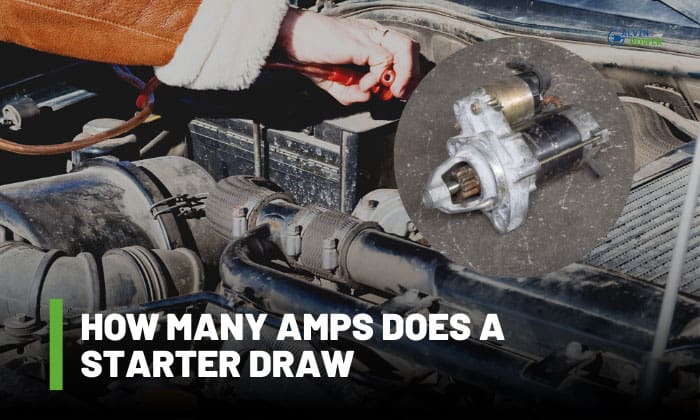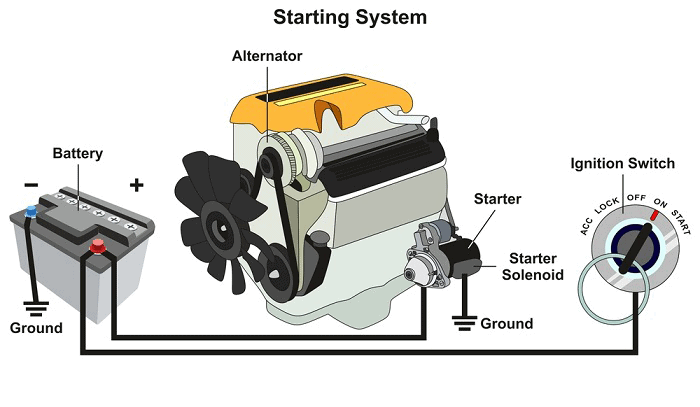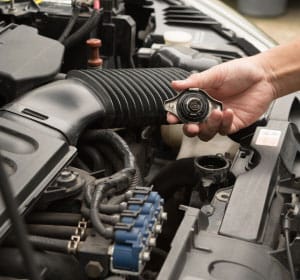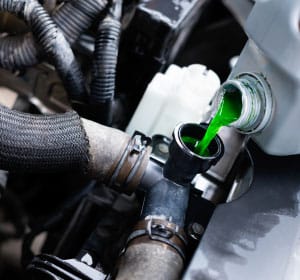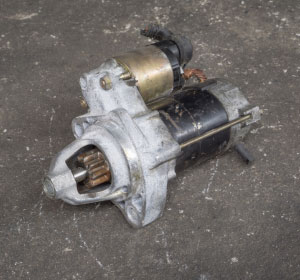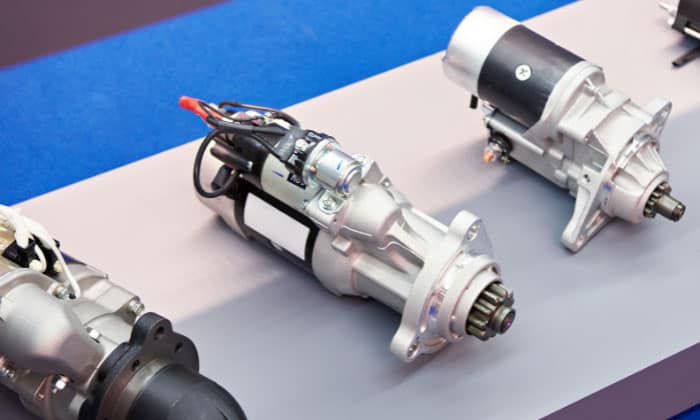A car starter is a powerful device to crank up and get the engine started. This device can draw huge amounts of current in a short period.
But how many amps does a starter draw? A gasoline or a diesel starter can take up anywhere from 125 amps up to 1500 amps or greater amps, depending on the vehicle’s engine.
Table of Contents
Amps Draw Test
We can test the amp draw of the car’s starter. This test procedure will help you monitor your starter’s progress.
- Connect a multimeter to the battery to set up a voltage draw test, and check the initial voltage of the battery. Checking the battery first will help you rule out any issues tracing to the battery. You should get that the battery is around 12 volts.
- Connect the amp clamp to the cable on the positive terminal of the battery to set up a current draw test. Checking the current with amp clamp can help us simultaneously observe voltage and current draw when the starter is on.
- You can pull the starter relay to ensure that the engine does not turn on during the procedure.
- Energize the starter directly for 15 seconds. Observe both the multimeter’s voltage and the amp clamp’s current. If you want to do a re-test, wait two minutes for the starter to cool down.
A normally operating starter should decrease the voltage in the multitester reading to around 10 volts for a 12V starter. The ammeter will show a reading, and its output will depend on the type of starter.
Factors That Affect How Current a Starter Draws
1. Engine size
The larger the engine, the more current the starter draws. A V8 starter will have a larger draw than a V4 starter, and larger trucks with more powerful engines will definitely draw more current.
2. Temperature
The colder the starting temperature, the more amps the starter draws. This can happen because the battery might have its chemical reactions affected by cooler temperatures. The oil in the engine also gets more viscous due to the lower temperatures.
3. Oil viscosity
The thicker the oil, the harder it is to start the car and more amps are needed. If oil is regularly changed, viscosity due to old oil might not be an issue.
However, oils can have different innate viscosities, like how 5W40 motor oil is less viscous at lower temperatures than 10w40 oil. That’s why it is important to use the right oil to hit the balance between lower viscosity and protective features. Check the manufacturer’s recommendation for the right oil for your vehicle.
4. Starter motor condition
A faulty starter can have a high amp draw that may be traced to a damaged starter solenoid. A starter does get old, loses its efficiency and will need replacement in due time.
Average Amp Draws for Different Vehicles and Engines
Here is a starter amp draw chart for different engines. We expect larger amp draws for larger engines, but always compare your measurement to the starter amp draw specs given by manufacturers:
| Engine | Estimated starter draw test specifications (amps) |
| Four cylinder (V4) | 125-150 |
| Six cylinder (V6) | 150-175 |
| Eight cylinder (V8) | 175-225 |
| Larger vehicles like trucks | 1500 or greater |
The Importance of Knowing Starter Amp Draw
The amps in the starter draw test measure the necessary amps needed to start your vehicle and it can help you diagnose problems in your vehicle. When you observe your vehicle does not start as expected, then you can check the starter’s amperage draw.
But first make sure you check the battery.
When you check starter with multimeter and the voltage and current are fine, then other parts of the vehicle may need to be checked.
If the voltage is fine and the amp draw is low, then the connections to the starter might have an issue. But if the current draw is high at a low voltage, then the starter might be faulty and may need replacement.
Aside from the amp draw, also check for other signs that might show up when you perform the starter amp draw test. Other signs of damage include smoke that indicates overheating of the starter or a short circuit.
Also, noises can mean problems on the engagement between the starter’s gears and the engine’s flywheel.
What is a Starter Motor? How Does It Work?
A starter uses electrical energy to move the engine. Like a lot of motors, a starter motor consists of magnets (either permanent magnets or field coils) surrounding a rotating arm with brushes. It also has gears that can engage the engine’s flywheel.
When you start a car, the starter solenoid switch acts like a magnet and draws the plunger to close the circuit. Current will then flow to the rotating arm surrounded by the magnets and start to spin. This moves the starter’s gears.
The starter motor converts electrical energy into mechanical energy to engage the starter’s gears to the engine, move the starter’s gear to move the engine, and disengage the starter when the engine begins running. This process requires a lot of energy, so the starter motor amp draw is large.
Conclusion
Knowing how many amps does a starter draw can help you diagnose your car’s problems. When you test starter with multimeter and perform a starter amp draw test, you can either eliminate the starter as a cause of your issues, or you can check if the starter is the issue to begin with.
If the current draw of your vehicle is beyond manufacturer’s specifications, or looks as if it’s different from our starter amp draw chart, bring your car to a mechanic for proper checking. This ensures that your car always starts regularly as you intend it to be.

I am Edwin Jones, in charge of designing content for Galvinpower. I aspire to use my experiences in marketing to create reliable and necessary information to help our readers. It has been fun to work with Andrew and apply his incredible knowledge to our content.

